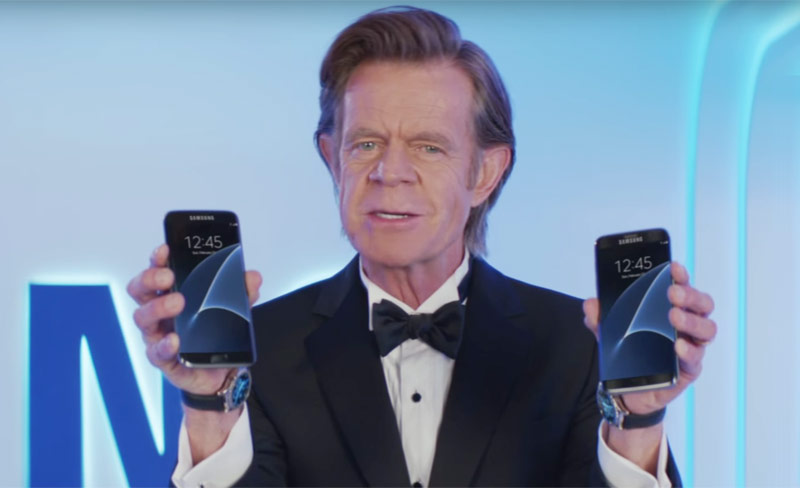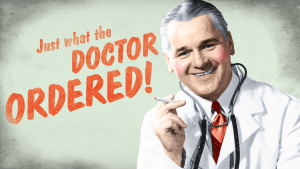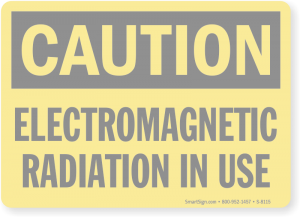
A few days ago I’ve got a message from Michael Greger from NutritionFacts.org. He informed me that used my research article in his new video. I thanked him and went to the video. As it turned out, the video is rather interesting. Not only because our article [1] was used 🙂 but also because it gives a high-quality analysis of modern research on cancer risks from cell phone use and on biological mechanisms of cell phone radiation effects. And even more, Michael’s team made a great job to analyze the influence of the industry on the outcomes of scientific research which they are funding.
Back to the question in the title of this post. Big pharma, big tobacco and big wireless as well as the other big’s like nuclear industry all have in common a heavy influence on the results of research they are funding. Why do they need research? To provide evidence that their products are safe, reliable and effictive. Because they are respectful companies and can’t just state something without strong scientific evidence. Well, effectiveness/ineffectiveness of pharmaceuticals, reported in scientific publications varied 4 times depending on presence or absence of financial support of a particular research from the pharma industry [2]. But it is relatively soft pressure of the sponsor. Research funded by the tobacco industry demonstrates much bigger bias. As it turned out, papers funded by big tobacco admitted negative effects of passive smoking 88 (!) times less often than independent publications [3]. And then those “reliable scientific data” migrate into the media and ads. If you are young enough you maybe are not familiar with media messages like “More doctors smoke Camel” or “Not throat irritation due to smoking”. But older people say those ads were rather persistent a few decades ago, and all of them were supported by “strong scientific evidence”.

Unfortunately, the wireless industry, which utilizes one of the most developed technologies of our days, is in this line when we are talking about public health risk assessment from wireless radiation. My advice is don’t pay much attention to scientific publications on the issue if they were funded by the telecom industry. Why? Because independent research demonstrates adverse effects of wireless radiation something about 10 times more often than those funded by big wireless [4].
An interesting issue here is that they don’t even need to falsify the data. As Dr. Jerry Phillips from the University of Colorado explained (he fought with Motorola a lot), experienced scientist just knows how to get a desirable result. I’ll explain the idea. In one of my team’s research articles published in the International Journal of Radiation Biology [5], we demonstrated that the exposure of developing quail embryos to microwave radiation from a typical commercial cell phone during one week depressed embryo development and significantly increased level of DNA damages in embryonic cells. In the same article we also showed that the shorter period of exposure, 38 hours, of the same embryos to the same type of radiation actually led to the opposite effects – the embryos grew better and level of DNA damages in exposed embryonic cells was even lower than in unexposed control. Biologically these data are plausible: low level of harmful factor stimulated reparative processes in exposed cells and led to “hyperrestoration” of slightly damaged cellular systems. Instead, higher level of harmful factor (longer exposure in our case) led to exhausting of cellular reparative systems and to manifestation of adverse effects of the exposure. And now surprise, surprise. All of a sudden, just after our publication, some “research fund” of some telecom company/association contacts me and proposes research grant, really good money, not a few thousand, but let’s say a couple of million dollars for our research with only one “soft condition” – they don’t want to see any negative effects of radiation in our results. And if I am not morally strong enough, I know what to do. I am planning the next set of experiments according to the strongest research protocols in strict laboratory conditions with variation of the factor I am studying and so on. The only issue is that all variations of the time of exposure will be shorter than 38 hours. And if you don’t know about our previous results (most possibly you don’t), our new experiments will demonstrate complete absence of negative effects of cell phone radiation on a particular biological model. Happy end for the wireless. Because even if you know about our previous publications or some other publications which do demonstrate harmful effects of the exposure, you may just think – well, they know nothing yet, one day they have effects, the other day they don’t, why should I worry about? That’s it! As Dr. Martin Blank from Columbia University reasonably explained, one of the most effective strategies of the industry to manage public concern is to compromise undesirable scientific data and to sow doubts in minds.

As for the epidemiological studies, one of the strategies here to get desirable for the industry results and dispel public concerns is to use for the analysis as short period of time as possible. You remember, Prof. Lennart Hardell firstly demonstrated a significantly increased risk of brain tumors in Swedish cell phone users after 10 years of cell phone use (see my post on the issue here). So, let’s take for the analysis significantly shorter period of time, let’s say, a couple of years (many people don’t know the difference). Or let’s play with a formation of exposed and control groups of population as they did in a “sound” Danish national cell-phone-cancer study [6]. The study was published in 2006 but carried out in 1990th on the national level in Denmark. 420 thousand cell phone users were included in exposed group, but corporate customers of cell phones for some reason were not included into this group and guess what. Instead, they were classified as control population of non-users of cell phones. The important detail here is that in 1990th not so many people as today were active users of wireless service due to its high cost, and corporate customers were the most active ones. So, excluding 200 thousand of most active users of cell phones from cell-phone group and transferring them into the control group was someone’s great idea “to balance” the groups. Not surprising, the study didn’t reveal any increased risk in “cell-phone group” as compared with “control population”. By the way, the average time of cell phone use in those users was 17 to 23 minutes per week. So, even without manipulations with groups it was hard to find any significant risks under so low level exposure. Meanwhile, the study has provided the industry a great opportunity to state during the years “that any association of risk of cancer and cellular telephone use can be excluded”. Happy end again. My only question is about those guys from the Institute of Cancer Epidemiology of Danish Cancer Society and other respectful organizations (three research centers were involved). Do they still call themself scientists? Maybe they even teach students how it’s important to form correctly experimental and control groups of population for reliable epidemiological research. I am interested what they put down in their business cards? I propose something simple like that “John Smith, a watchdog of the wireless industry”.
And now enjoy the video. (By the way, as I wrote to the author, their next one, on classification of cell phone radiation as possibly carcinogenic to human, is not so impressive and a little bit too “politically correct” as if they didn’t want to irritate the wireless industry a lot.)
My final thought for today: Because the big industries have so huge money that can control research, media and even regulatory agencies, it is so important for all of us, people, to press our authorities and to force them to provide independent from the industry risk assessment studies, to support independent media, and (surprise, surprise) to close revolving doors between the industries and regulatory agencies, which should regulate and control those industries’ products.
Be informed and healthy,
Dr. Igor Yakymenko
References
- Yakymenko I, Tsybulin O, Sidorik E, Henshel D, Kyrylenko O, Kyrylenko S. Oxidative mechanisms of biological activity of low-intensity radiofrequency radiation. Electromagn Biol Med 2016; 35: 186-202.
- Lexchin J, Bero L A, Djulbegovic B, Clark O. Pharmaceutical Industry Sponsorship And Research Outcome And Quality: Systematic Review. BMJ: British Medical Journal 2003; 326: 1167-1170.
- Barnes D E, Bero L A. Why review articles on the health effects of passive smoking reach different conclusions. JAMA 1998; 279: 1566-1570.
- Huss A, Egger M, Hug K, Huwiler-Müntener K, Röösli M. Source of Funding and Results of Studies of Health Effects of Mobile Phone Use: Systematic Review of Experimental Studies. Environmental Health Perspectives 2007; 115: 1-4.
- Tsybulin O, Sidorik E, Brieieva O, Buchynska L, Kyrylenko S, Henshel D, Yakymenko I. GSM 900 MHz cellular phone radiation can either stimulate or depress early embryogenesis in Japanese quails depending on the duration of exposure. Int J Radiat Biol 2013; 89: 756-763.
- Schüz J, Jacobsen R, Olsen J, Boice J. Cellular Telephone Use and Cancer Risk: Update of a Nationwide Danish Cohort. Journal of the National Cancer Institute 2006; 98: 1707–1713.



